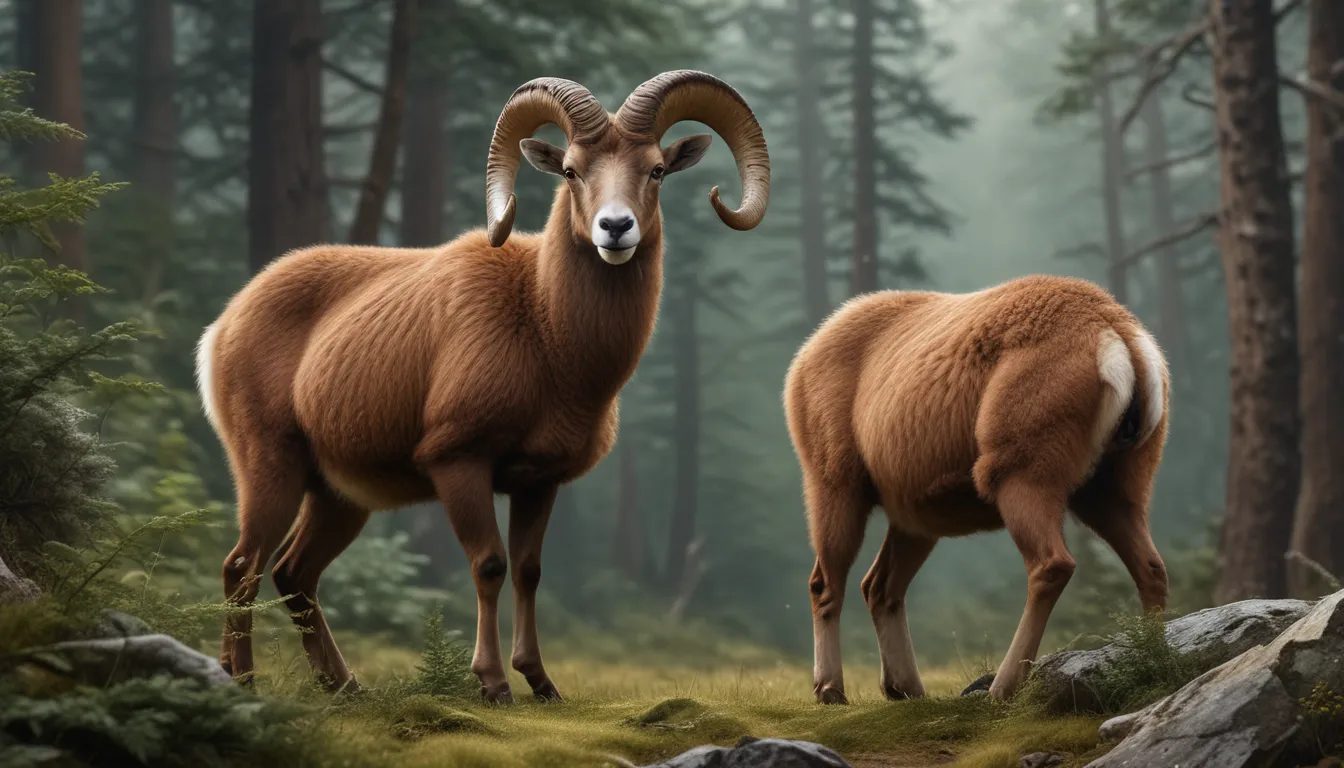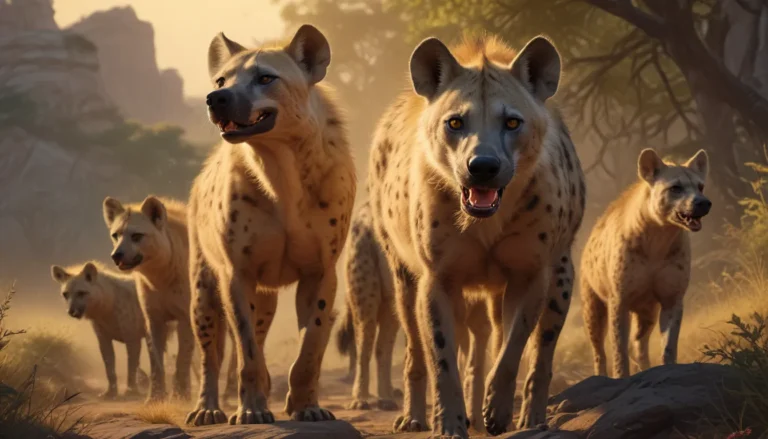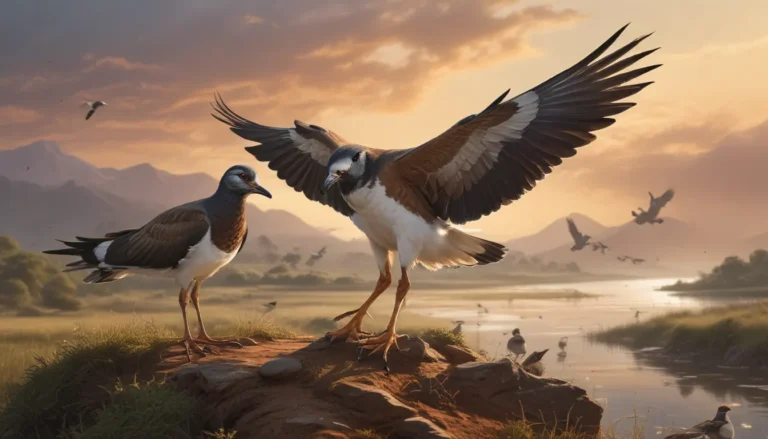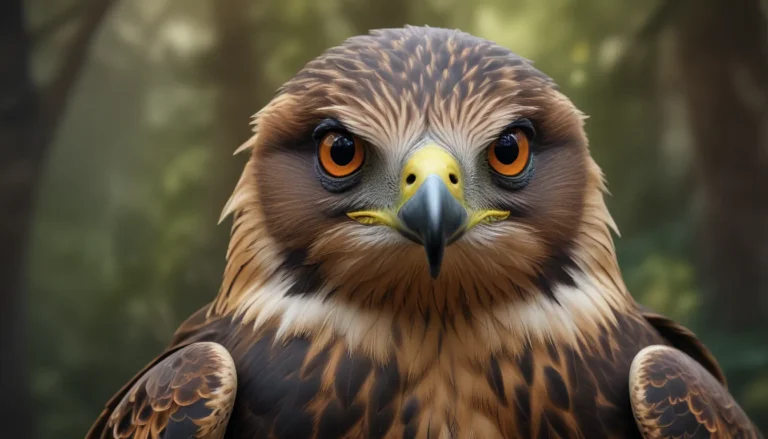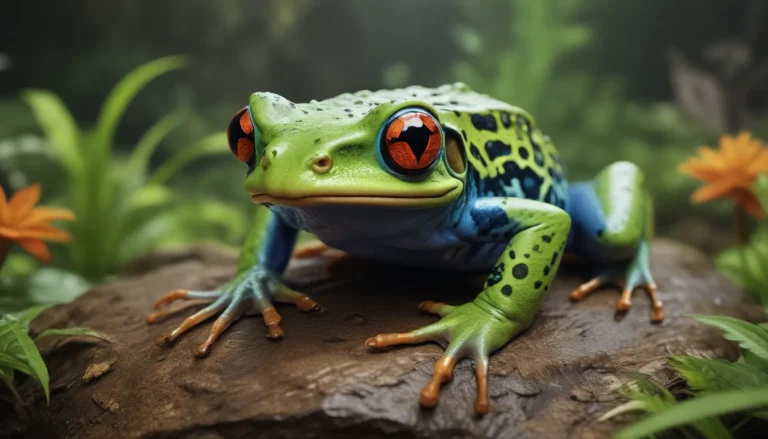The pictures we use in our articles might not show exactly what the words say. We choose these pictures to make you interested in reading more. The pictures work together with the words but don’t take their place. The words still tell you the important facts.
Are you ready to embark on an exciting journey into the world of Mouflon sheep? These majestic creatures, scientifically known as Ovis orientalis, are truly captivating with their impressive curved horns and striking appearance. Join us as we delve into 11 fascinating facts about Mouflon sheep, exploring their origin, physical features, social behavior, and more. Let's uncover the wonders that make Mouflon sheep so remarkable and gain a deeper appreciation for these awe-inspiring animals.
Key Takeaways:
- Mouflon sheep are wild, adaptable creatures with impressive horns and a striking appearance. They play a vital role in their ecosystems and have cultural significance in their native regions.
- Male Mouflon sheep engage in fierce battles to establish dominance and mate with females during the breeding season. Their adaptability allows them to thrive in various habitats, but they also face threats from predators and human activities.
Mouflon Sheep Origin and Habitat
The Mouflon sheep, native to the mountains of Corsica, Sardinia, and Cyprus, are truly a sight to behold. These majestic wild sheep primarily inhabit rocky terrains and steep slopes, showcasing their adaptability to challenging environments.
Mouflon Sheep Physical Appearance
With a compact and muscular body covered in thick, coarse fur, Mouflon sheep are known for their striking reddish-brown or brown wool that fades to a lighter hue on the underbelly. Their physical features make them stand out in their natural habitats.
Mouflon Sheep Horns
Both male and female Mouflon sheep possess horns, but it's the males that boast larger and more impressive horns. These horns, with their characteristic spiral shape reaching up to 80 cm in length, are a defining feature of these remarkable animals.
Mouflon Sheep Social Behavior
Living in small herds typically led by a dominant ram, Mouflon sheep exhibit strong social hierarchies within their groups. Their adaptability and ability to establish social structures contribute to their survival in diverse habitats.
Mouflon Sheep Diet
As herbivores, Mouflon sheep graze on a variety of vegetation, including grass, leaves, and shrubs. Their excellent foraging skills enable them to thrive in environments with limited food resources, showcasing their resilience.
Mouflon Sheep Reproduction
During the breeding season, male Mouflon sheep engage in intense battles to establish dominance and mate with receptive females. Ewes give birth to one or two lambs after a gestation period of around 160 days, highlighting the intricate reproductive cycle of these animals.
Mouflon Sheep Adaptability
Thriving in mountainous regions, grasslands, and semi-desert areas, Mouflon sheep have proven their adaptability to various habitats. This adaptability paves the way for their survival and success in diverse environments.
Mouflon Sheep Conservation Status
While some populations of Mouflon sheep are stable, others face endangerment due to habitat loss, hunting, and competition with domestic sheep for resources. It's crucial to address these threats to ensure the preservation of these majestic animals.
Mouflon Sheep Mating Rituals
Male Mouflon sheep showcase their dominance through elaborate mating rituals, using their impressive horns as displays of strength. The head-to-head clashes to establish hierarchy and win the right to mate with females are a spectacle to behold in the wild.
Mouflon Sheep Predators
Facing threats from wolves, golden eagles, and occasionally brown bears, Mouflon sheep must navigate a world filled with natural predators. The delicate balance between predator and prey underscores the importance of these animals in their ecosystems.
Mouflon Sheep Cultural Significance
Symbolic and culturally significant in their native regions, Mouflon sheep are often depicted in ancient art and hold a special place as national symbols in certain countries. Their presence transcends mere physical characteristics, echoing through history and tradition.
Conclusion
In conclusion, Mouflon sheep are truly captivating creatures with unique characteristics that set them apart in the animal kingdom. From their impressive horns to their adaptability, these animals are a marvel to observe and study. By understanding the intricacies of Mouflon sheep, we gain a deeper appreciation for the natural world and the fascinating creatures that inhabit it.
Whether you encounter a Mouflon sheep in the wild or simply read about them, these facts offer valuable insights into the world of these remarkable animals. Embrace the wonder of Mouflon sheep and let their beauty and resilience inspire you to explore and appreciate the rich biodiversity that surrounds us.
FAQs
- Where can Mouflon sheep be found?
-
Mouflon sheep can be found in various parts of the world, including Europe, Asia, and North America.
-
Are Mouflon sheep endangered?
-
While certain subspecies of Mouflon sheep are considered endangered, others have stable populations and are not currently at risk.
-
What do Mouflon sheep eat?
-
Mouflon sheep graze on a variety of vegetation, including grass, herbs, and shrubs.
-
How long do Mouflon sheep live?
-
Mouflon sheep typically live up to 10-12 years in the wild, but they may live longer in captivity.
-
Are Mouflon sheep social animals?
-
Yes, Mouflon sheep are known for their social behavior and live in groups called herds or bands.
-
How fast can Mouflon sheep run?
-
Mouflon sheep are agile runners and can reach speeds of up to 30 miles per hour (48 kilometers per hour).
-
Do Mouflon sheep have any predators?
-
Mouflon sheep face threats from predators such as wolves, coyotes, and large birds of prey.
-
Can Mouflon sheep swim?
-
While Mouflon sheep are not known for their swimming abilities, they are capable of crossing bodies of water when necessary.
-
How do Mouflon sheep communicate?
-
Mouflon sheep use various vocalizations, body postures, and scent markings to communicate with each other.
-
Do Mouflon sheep migrate?
-
Mouflon sheep are known to make seasonal movements but do not typically undertake long-distance migrations.
-
Can Mouflon sheep interbreed with domestic sheep?
- Yes, Mouflon sheep are capable of interbreeding with domestic sheep, resulting in hybrid offspring known as “Mouflon hybrids.”
Embrace the Wonder of Mouflon Sheep
As you delve into the world of Mouflon sheep through these 11 intriguing facts, you gain a deeper understanding of the complexity and beauty of these remarkable animals. Their significance in the natural world transcends mere observation, inviting you to appreciate the intricate balance of ecosystems and the marvels of adaptation. Let the spirit of the Mouflon sheep inspire you to explore, learn, and cherish the biodiversity that surrounds us.
